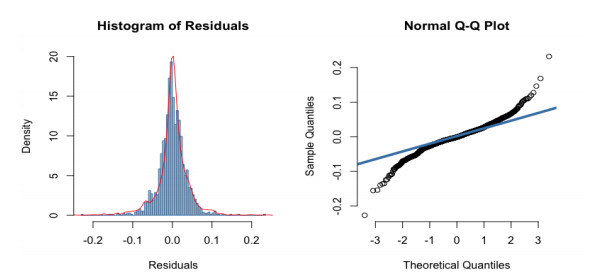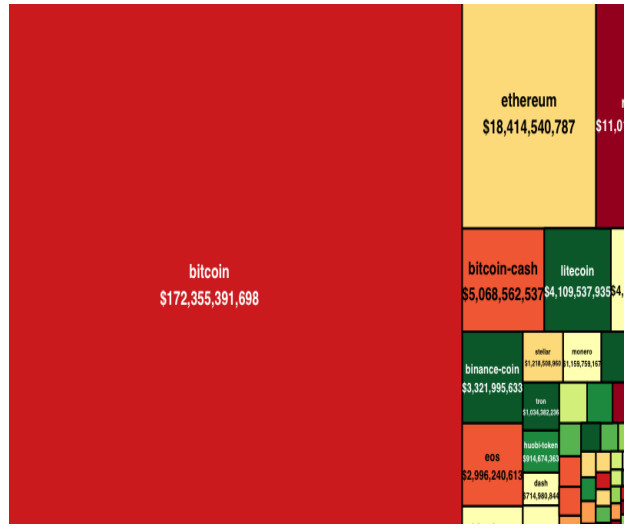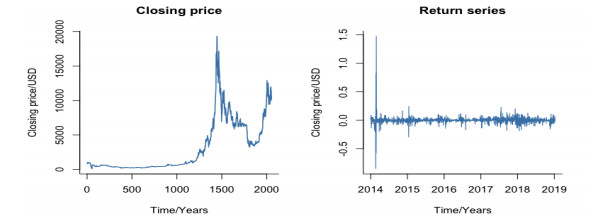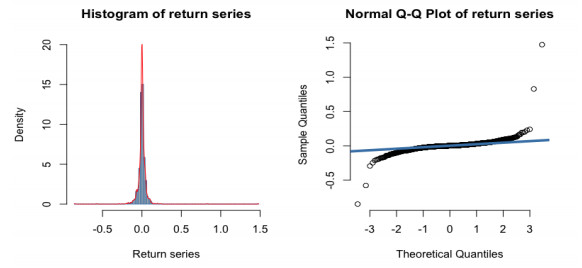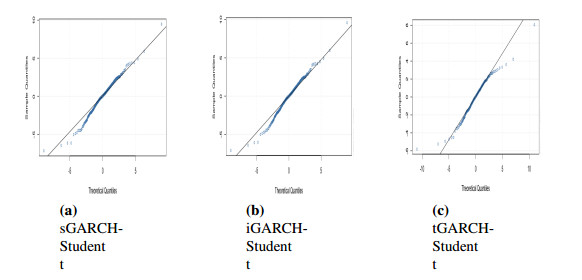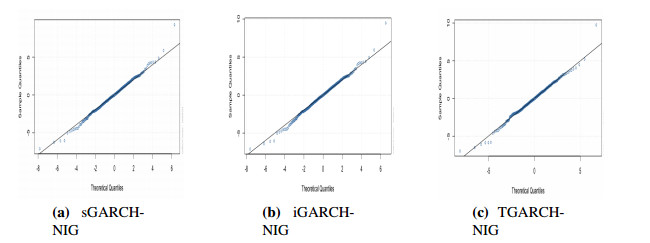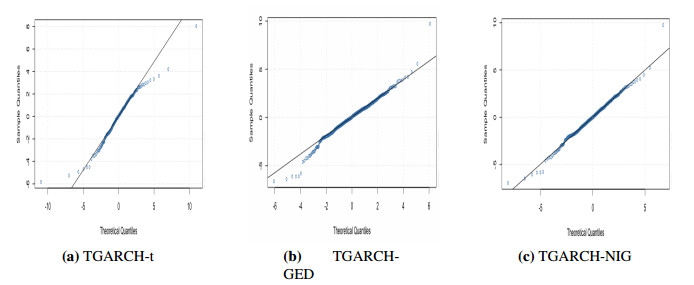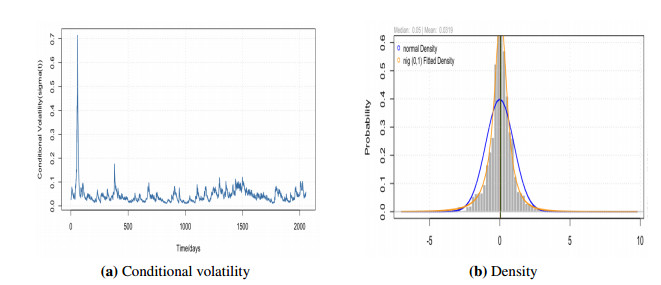Androgen insensitivity syndrome (AIS) is caused by mutations in the gene encoding the androgen receptor (AR). The incidence of AIS is estimated to be 1 in 99,000. Complete androgen insensitivity syndrome (CAIS) is characterized by a 46,XY karyotype with external genitalia that appear typically female and results from mutations that render the androgen receptor non-functional. Partial androgen insensitivity syndrome (PAIS) results from partial loss of function mutations in AR. Rarely, PAIS results from somatic mosaicism for an AR mutation and not from a hypomorphic variant. We present two cases of PAIS due to somatic mosaicism, one caused by a novel nonsense mutation and one caused by a missense mutation previously reported in CAIS. Two patients with atypical genitalia presented to our multidisciplinary clinic for disorders of sex development and sequencing of AR was performed as part of the diagnostic evaluation. In case one, AR sequencing revealed mosaicism for a nonsense mutation, c.1331T > A; p.Leu444Ter. This mutation has not previously been reported, but is presumed to be pathogenic. In case two, AR sequencing revealed a mosaic missense mutation, c.2279 C > A; p.Ser760Tyr, which has previously been reported in CAIS but not in PAIS. Similar phenotypes may result from AR mutations that are present in a mosaic state with full loss of function or hypomorphic mutations that partially impair the function of the protein in either all tissues or in a mosaic state.
1.
Introduction
The cryptocurrency market continues to be a potential source of financial instability and its impact on the financial market still remains uncertain. Different from other financial assets which are regualarized, there is no formal regulation for cryptocurrencies. Cryptocurrencies also differ significantly from other financial assets on the financial market and thus creates great propsects for investors and market players in terms of portfolio analysis, risk management and even consumer sentiment analysis Dyhrberg (2016). In the cryptocurrency market, volatility modelling is important in measuring the riskiness of an investment. Volatility can be define as a measure of the dispersion in a probability density. Market players and investors are therefore interested in accurate estimation of volatility in the cryptocurrency market. This is as a result of the correlation between volatility and returns on investment. It is notable that volatility is not directly observable and as a result there is increasing need for efficient model that can capture the price volatility in the cryptocurrency market. Estimating the volatility of Bitcoin is very crucial since Bitcoin has the highest market capitalization in the cryptocurrency market.
Most financial time series data have shown that the conditional distribution of returns series exhibit several stylized features such as excess kurtosis, negative skewness, price jumps, leverage effects, timevarying volatility, and volatility clustering. These stylized facts and properties of the returns series have significant ramification for financial models especially risk-scenario distribution, volatility estimation and prediction. To capture these stylized facts in these data's, different volatility modelling tools have been developed to model and estimate volatility. Hence, modeling the temporal dependencies in the conditional variance of Bitcoin time series has been the interest of many economists and financial analysts. However, the Bitcoin market is relatively new and there have not been enough literatures on the different models used in estimating the volatility in the market. Gronwald (2014) modelled Bitcoin price data using an autoregressive jump-intensity GARCH model and a standard GARCH model. Their results indicated that the autoregressive jump-intensity GARCH model performed better in fitting the Bitcoin price data than the standard GARCH model. Gronwald (2014) used multiple threshold-GARCH and Asymmetric-power GARCH to measure and estimate the volatility in the price of Bitcoin. They used Akaike information criterion (AIC), Bayesian information criterion (BIC) and Hannan-Quinn information criterion (HQC) to capture the leverage and regime switching features of the conditional variance and concluded that Bitcoin market is not yet matured. In their study, Bouri et al. (2016) evaluated the safe-haven property of Bitcoin and its relationship to before and after the Bitcoin price crash of December 2013. Based on an asymmteric-GARCH, the authors concluded that Bitcoin has a safe-haven property in the pre-crash period and no safe-haven property post-crash period. Using the price of Bitcoin, Katsiampa (2017) studied the best conditional heteroscedasticity model in relation to goodness-of-fit. They revealed that the optimal model was the the AR-cGARCH model. By fitting 12 GARCH-type models to the log returns of exchange rates for seven different cryptocurrencies including Bitcoin, Chu et al. (2017) concluded that iGARCH (1, 1) with normal innovations is the optimal model. Their conclusion however differs from the known stylized fact* of financial time series data.
*returns have fatty tails and high kurtosis
This paper study the estimation capacity of different non-parametric GARCH-type models on volatility of the return series of Bitcoin for the period between 01 January, 2014 to 16 August, 2019. Non-parametric methods are applied to the GARCH-type models because they do not assume any distributional assumptions and can capture the kurtosis and fatty tails of the return series of Bitcoin. We employ the Students-t distribution, Generalized Error Distribution, and the Normal Inverse Gaussian distribution.
2.
Materials and methodology
2.1. Data
In this study, closing price was selected as the price of Bitcoin because it reflected all the activities of Bitcoin for each trading day. Historical daily closing price of Bitcoin was extracted from 01/01/2014 to 16/08/2019 at https://coinmarketcap.com/ and consisted of 2054 trading days.
Now, assume $ P_t $ and $ P_{t-1} $ represents the current day and previous day price of Bitcoin, then the return series/log returns $ (R_t) $ is calculated as
2.2. Test of normality
The residuals data of Bitcoin are checked for normality. If the dataset is normally distributed, then a parametric statistic like the Normal distribution can be assumed. However, if the residuals data are not normally distributed, a non-parametric statistic will be used. If the normality test fails, it is important to consider the histogram and the normal probability plot to check the presence of outliers in the data set. We employed the Jacque-Bera (JB) test statistics and the Anderson-Darling (AD) test statistics for the normality test. The JB and the AD test statistics are defined as in equation 2 and 3 respectively:
where $ n $ is the sample size, $ S $ and $ K $ are the sample skewness and kurtosis respectively.
where $ F(\cdot) $ is the cumulative distribution function (CDF) for the specified distribution and $ i $ is the $ i_{th} $ sample.
The JB test (Jarque and Bera, 1987) uses the Lagrange multiplier approach on the Pearson family of distributions to derive tests for normality if observations and regression residuals. It is centered on sample skewness and kurtosis. The AD test (Anderson and Darling, 1954) was developed by Anderson and Darling in 1954. It gives more weight to the tails of distribution. AD test is based on the empirical distribution function. The JB and AD test compare the scores in the sample to a normally distributed set of scores with same standard deviation and mean. The null hypothesis of this test is ``sample distribution is normally distributed". The distribution is not normally distributed if the test is significant.
2.3. Testing for auto regressive conditional heteroscedasticity (ARCH) Effects
To apply GARCH models to the Bitcoin returns series, the presence of stationarity and ARCH effects in the residual return series are tested. The Ljung-box and Lagrange multiplier (LM) test (Engle, 2001) are used to test for the presence of ARCH effects in the data.
2.3.1. Ljung Box test
The Ljung Box test (Box and Pierce, 1970) is a method used in testing the absence of serial autocorrelation up to a specified lag $ k $. It can be defined as
$ H_0 $: The observed data do not exhibit serial correlation
$ H_1 $: The observed data exhibit serial correlation
The test statistics is given as:
where $ N $ is the sample size, $ h $ is the time lag, $ \hat{\rho}_k^2 $ is the estimated autocorrelation of the series at lag $ k $.
2.3.2. Lagrange multiplier (LM) test
To apply GARCH models to the returns series data, it is important to test the residuals for the presence of AutoRegressive Conditional Heteroscedasticity (ARCH) effects. The LM test was used to test for the presence of ARCH effects. LM is defined as;
$ H_0 $: No ARCH effect
$ H_1 $: Presence of ARCH effects.
The LM test statistics is given as:
where $ N $ is the total number of observations, $ R^2 $ forms the regression, and $ q $ is the number of restrictions.
2.4. Conditional variance equation
2.4.1. Standard Generalized AutoRegressive Conditional Heteroskedasticity (sGARCH)
GARCH is an extension of the ARCH model that integrates a moving average (MA) part together with the autoregressive (AR) part.
Define a GARCH (p, q) model as
where $ \omega > 0 $, $ \alpha_i > 0 $, $ \beta_j > 0 $, $ \sum_{i = 1}^{p} \alpha_i + \sum_{j = 1}^{q} \beta_j < 1 $. $ \epsilon_t $ is the is a sequence of independent and identically distributed random variables. For the sake of tractability, the order of all the GARCH models used will be restricted to one.
The standard GARCH model (Bollerslev, 1986) represented as sGARCH(1, 1) is given as
2.4.2. Integrated GARCH (iGARCH)
Suppose the sum of the coefficients in Equation 6 is equal to 1, the GARCH process is called an Integrated GARCH (iGARCH). That is, the iGARCH models are unit-root GARCH models. A basic characteristic of the iGARCH model is that the effect of past squared shocks $ \eta_{t-i} = x_{t-1}^2 - \sigma_{t-i}^2 $ for $ i > 0 $ on $ x_t^2 $ is persistent. An iGARCH(p, q) model assumes the form
Define an iGARCH (1, 1) model as
where $ 1 > \beta_1 > 0 $.
2.4.3. Threshold GARCH (tGARCH)
The tGARCH model was developed independently by Ravichandran et al. (1989) and Glosten et al. (1993). A tGARCH(p, q) model assumes the form
where
$ \alpha_i > 0 $, $ \beta_j > 0 $, and $ \lambda_i > 0 $.
The generalized version of the tGARCH TGARCH(1, 1) is given as:
where $ \alpha $ and $ \alpha + \lambda $ denote the effect of good news and bad news respectively. A $ \lambda > 0 $ is an evidence that bad news upsurge volatility in the Bitcoin market. This indicates the existence of leverage effects of the first order. For an asymmetric news effect, $ \lambda \neq 0 $.
2.5. Distribution assumptions of the error ($ \epsilon_t $)
From the test of normality for the returns residuals in table 3 and figure 4, it is clear that the distribution of the residuals returns are not normally distributed. There is the presence of excess kurtosis and heavy-tails in the distribution of the residuals returns. To account for the excess kurtosis and fat tails that are present in the residuals of the returns series, we model the error term in the GARCH models with Student-t distribution, Generalized Error Distribution (GED), and Normal Inverse Gaussian (NIG) types of distributions. These distributions are appropriate to capture the excess kurtosis and the skewness in the residuals return series.
2.6. Student's t-distribution (t)
The Student's t-distribution or the t-distribution is a sub-class of the continuous probability distributions. It is used when the sample size is small and the population standard deviation is unknown. It was proposed by Student (1908). The probability density function (pdf) of the t-distribution is defined as
where $ v $ is the number of degrees of freedom and $ \Gamma(\cdot) $ is the gamma function.
The log likelihood function is defined as below
2.6.1. Generalized Error Distribution (GED)
The standardized GED or the error distribution is a symmetrical unimodal sub-class of the exponential family with shape parameter $ v $. The pdf of the GED is defined as in Equation 15,
where $ v $ determines the tail weight with larger value of $ v $ giving lesser tai weight, $ k(v) $, and $ \lambda(v) $ are constant and are defined as
$ \Gamma(x) = \int_{0}^{\infty} t^{x-1}e^{-t}dt, \, \, x > 0 $ is the Euler gamma function.
The log likelihood function is defined as
2.6.2. Normal Inverse Gaussian (NIG) distribution
The NIG distribution was proposed by Barndorff-Nielsen (1977) and it is a sub-class of the generalized hyperbolic distribution. The pdf of an NIG distribution for a random variable $ X $ is defined as
where $ q(x) = ((x - \mu)^2 + \delta^2)^{1/2} $, $ \alpha > 0 $ determines the shape, $ 0 \le \mid \kappa \mid \le \alpha $ determines the skewness, $ \delta > 0 $ is the scaling, $ \mu \in \mathbb{R} $ is the location parameter and $ x \in \mathbb{R} $. $ k_1(x) $ is the modified Bessel function of the second kind with index 1. The NIG distribution has a heavier tail than the normal distribution and can take different kinds of shapes. From equation 19, the shape of an NIG density is described using a four dimensional parameters ($ \alpha, \kappa, \mu, \delta $). The NIG distribution is appropriate for capturing data sets with extremal observations, skewness, and fat tails or semi-heavy tails. The log-likelihood of the NIG distribution is given as
2.7. Model selection
The best model was selected using two information criteria: Akaike information criteria (AIC) and Bayesian information criteria (BIC). AIC and BIC considers the accuracy of the model fit and the number of parameters in the model; rewarding a better fit and penalizing an increased number of parameters in the return series data. The optimal model that will be selected is the model with the minimum AIC and BIC values. The GARCH models used in this study were fitted using the maximum likelihood method.
where $ n, k, n, \Theta, \hat{\Theta} $ represent the number of observations, number of unknown parameters, vector of the unknown parameters, and the maximum likelihood estimates of the vector of the unknown parameters respectively.highest market capitalization in the cryptocurrency market.
The smaller the AIC and BIC values of a model, the better the fit of that model.
3.
Results and discussion
3.1. Descriptive statistics
The visualization in Figure 1 revealed that the entire cryptocurrency market is propped primarily by Bitcoin. Table 1 is the statistics of Bitcoin on the cryptocurrency market and table 2 presents the descriptive statistics of the return series of Bitcoin. The return series of Bitcoin is positively skewed. This indicates that the returns of Bitcoin is non-symmetric. The positive value of the skewness indicates that the distribution of Bitcoin return series is skewed to the right or positively skewed. The positive excess kurtosis ($ 216.7461 $) indicates that the returns are leptokurtic. That is, the returns series has a fatty tail. Figure 2 shows the time series plot of Bitcoin price (left Figure) and the return series (right Figure) of Bitcoin for the time period. Figure 3 is the histogram and the normal quantile-quantile (q-q) plot of the return series for the same time period. The residuals plot is presented in Figure 4. There is the presence of fatty tails and skewness in the residuals of the return series. This is confirmed from the JB and AD test statistics in Table 3. Both tests rejected the normality at $ 5\% $ significance level.
The Augmented Dickey Fuller (ADF) test (Dickey and Fuller, 1979) is used to test for stationarity. From Table 4, the null hypothesis of statonarity is rejected at 5% $ \alpha $-level of significance. Hence, there is no need to difference the return series. The Ljung-box and LM test are presented in Table 4. From the Ljung box test, the null hypothesis of ``no autocorrelation" in the squared residuals is rejected at 5% significance level. That is, there is dependency in the squared returns series of Bitcoin. Using the LM test, the null hypothesis of ``no ARCH effects" is rejected at 5% significance level. From the Ljung box and LM test, it can be concluded that the volatility ARCH effect is very much present in the return series. Hence, the GARCH models are used to model the returns series data.
3.2. Estimated volatility
Table 5 shows the results of the maximum likelihood estimate (MLE) of sGARCH(1, 1), iGARCH(1, 1), and tGARCH(1, 1) models for Bitcoin returns using student t-distribution. From the table, the log-likelihood value $ (4181.104) $ is maximum for tGARCH(1, 1) model. The values of the two information criterions (AIC = $ -4.0663 $, BIC = $ -4.0526 $) of tGARCH(1, 1) are minimum as compared to sGARCH(1, 1)-t and iGARCH(1, 1)-t. The visual QQ plot in Figure 5c is consistent with the AIC, BIC, and log likelihood values of the tGARCH(1, 1)-t. These results indicate that tGARCH(1, 1)-t model is the optimal model to describe the volatility of the return series of Bitcoin. Table 6 presents MLE results of sGARCH(1, 1)-GED, iGARCH(1, 1)-GED, and tGARCH(1, 1)-GED models for Bitcoin returns. Compared to the other models, the log-likelihood value of tGARCH(1, 1)-GED is the maximum. The AIC and BIC values of tGARCH(1, 1)-GED recorded the minimum values as compared to the other two models. Hence, the tGARCH(1, 1)-GED model is the best model compared to sGARCH(1, 1)-GED and iGARCH(1, 1)-GED. From Table 7, the tGARCH(1, 1)-NIG recorded the maximum log-likelihood value (4196.681). The AIC and BIC values ($ -4.0805 $ and $ -4.0641 $ respectively) of tGARCH-NIG were the lowest. This indicates that tGARCH(1, 1) is the best model for the volatility of the return series of Bitcoin using the Normal Inverse Gaussian distribution.
From the three selected models (tGARCH(1, 1)-t, tGARCH(1, 1)-GED, and tGARCH(1, 1)-NIG), the tGARCH(1, 1)-NIG was the most optimal model for capturing the the volatility of Bitcoin return series. This can be confirmed from the maximum log likelihood value and the minimum AIC and BIC values. This result is also in agreement from the visual plot in Figure 8c. It is therefore evident that the optimal model in terms of the information criterion, log likelihood, and QQ plot is the tGARCH(1, 1)-NIG. The volatility estimates obtained from tGARCH(1, 1)-NIG model is displayed in Figure 9a. It is evident that volatility moves through time. The density of tGARCH(1, 1)-NIG is shown in Figure 9b. Clearly, the NIG distribution was able to capture the fat tails and skewness in the distribution. This confirms the reliability and efficiency in using the NIG distribution for modelling the volatility of Bitcoin return series.
4.
Conclusion
This paper studied the volatility of daily return series of Bitcoin from 01/01/2014 to 16/08/2019. The results of the statistical properties revealed that just like other financial time series data, the return series of Bitcoin are leptokurtic. Different GARCH type models (sGARCH, iGARCH, tGARCH) were compared and the tGARCH model was identified to be the most appropriate model for estimating the time-varying volatility in Bitcoin return series. To account for the skewness and fat tails in the Bitcoin time series for the years understudy, the Student-t, Generalized Error Distribution (GED), and Normal Inverse Gaussian (NIG) distribution were used to capture the tail distribution in the GARCH models. The NIG distribution performed better in capturing the fat tail and skewness in the return series distribution. Hence, the tGARCH-NIG model was the optimal model for modeling and estimating the volatility in the return series of Bitcoin. The results of this study are useful for investors and market players in investment decision-making and making monetary policies.
Conflict of interest
The author declares that there are no conflicts of interest regarding the publication of this paper.
Data availability
Data for this work are available from the author upon request.









 DownLoad:
DownLoad:
